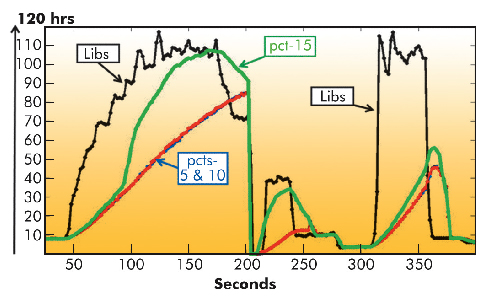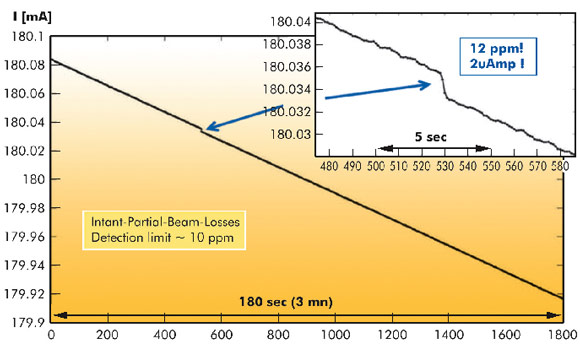- Home
- Users & Science
- Scientific Documentation
- ESRF Highlights
- ESRF Highlights 2010
- Accelerator and X-ray Source
- Upgrade of the electron beam position monitoring system
Upgrade of the electron beam position monitoring system
The most essential diagnostic in the storage ring of a third-generation light source is the beam position monitoring system and its associated orbit correction system. The quality of such systems largely determines the final beam stability, which is of utmost importance for many beamlines. The ESRF storage ring is equipped with 224 (32 cells x 7) beam position monitors (BPMs) located at regular intervals along the ring circumference. Each BPM station is constituted of 4 insulated buttons that capture weak radio frequency (RF) signals when the electron beam is passing through. The relative amplitudes of these weak signals depends on the position of the beam. The electronics processing these signals were replaced in 2009 with new units based on digital electronics (Libera Brilliance). This has already had far reaching and beneficial consequences for the beam quality, and further improvements can be expected in 2011. Indeed, the much lower noise in the beam position measurement has resulted in a greatly improved precision in the modelling of the linear lattice as obtained through transfer matrix measurements. The higher accuracy in the measurement of the lattice has resulted in a more effective coupling correction (less than 5 pm vertical emittance in USM as described above). A number of other applications of these electronics has been made or identified. The so-called sum signal of these 4 signals is proportional to the circulating beam current. Such a signal is only of real use if the whole chain of analogue and digital signal detection is of excellent stability. This appears to be the case of the Libera-Brillance units, if operated in a suitable way to maintain such stability. Averaging over the 224 BPMs results in a further reduction of the noise level by 15. This very low noise current monitor has resulted in a number of improvements in the monitoring of the beam in the storage ring. We have developed an improved lifetime measurement of the stored beam (see Figure 157), the capacity to diagnose instant micro-beam losses (see Figure 158) as well as an improved injection efficiency of the booster beam into the storage ring. Many other uses of the Libera electronics are under development, one of the most important being the fully renovated orbit correction system operating with all 96 steerers which will operate continuously from DC to 150 Hz.
 |
|
Fig. 157: Comparison of lifetime measurements made over a Machine Dedicated Time experiment during which the beam emittances were varied considerably. The measurement made from the sum signals from the Liberas is capable of diagnosing a 120 h lifetime over a few seconds while the conventional Parametric Current Transformers need several minutes of averaging to deliver a stable lifetime diagnostic. |
 |
|
Fig. 158: Micro-beam loss of 2 micro-amps taking place over a second diagnosed by the sum signal of the Libera electronics. |



